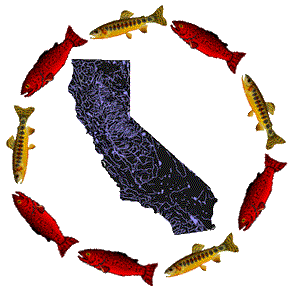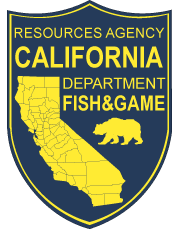CSPA |
| Your 501(c)(3) tax deductible cash donations are desperately needed if the fight for our fisheries is to continue. Read how you can donate! |

 More News
More News
![]()
 DFG declares limited Sacramento late-fall run salmon fishing a success
DFG declares limited Sacramento late-fall run salmon fishing a success
January 17, 2009 -- The limited Sacramento River late fall-run Chinook salmon season in 2008 was successful. The Department of Fish and Game (DFG) estimates that approximately 2,400 Chinook salmon were harvested and 100 caught and released during the November and December season. Coded wire tag readings indicate that late-fall Chinook salmon run were caught, while anglers successfully avoided any major contact with depleted fall-run and endangered winter-run stocks.
"This season was set because the Sacramento late-fall Chinook run was stable, allowing an opportunity for anglers to catch a salmon," said Neil Manji, DFG Fisheries Branch chief.
The fishery was confined to the Sacramento River between Knights Landing and the Red Bluff Diversion Dam during November and December 2008. DFG scientific aides and biologists collected scale samples and recovered coded ... (Continued) wire tags for salmon caught by anglers. Analysis of the data collected by DFG shows that hatchery salmon comprised 71 percent of the catch. Of 147 coded wire tags successfully recovered and read, all tagged salmon but one was of Coleman National Fish Hatchery origin and of late-fall Chinook descent. One salmon was of winter-run decent.
Anglers fished an estimated 89,500 hours totaling about 16,550 fishing trips. They caught 2,500 late fall-run Chinook salmon. Fishing effort more than doubled while harvest slightly increased over the average of two historical survey periods in 1998-2002 and 2007-2008.
"DFG, with the cooperation of anglers, successfully recovered and read 147 coded wire tags," said Mike Brown, DFG's Central Valley Angler Survey Coordinator. "None of the tagged salmon were of fall-run Chinook origin. Information gathered by recovering these tags indicated a successful fishery with no evidence of impact to depleted fall-run Chinook salmon."
All information collected by DFG at hatcheries, by biologists working in the field, and through data analysis will be presented to the Pacific Fisheries Management Council (PFMC) in February for review. The PFMC will analyze the data and make recommendations, based on conservation goals, on which runs of salmon can sustain a fishing season with allowable harvest.